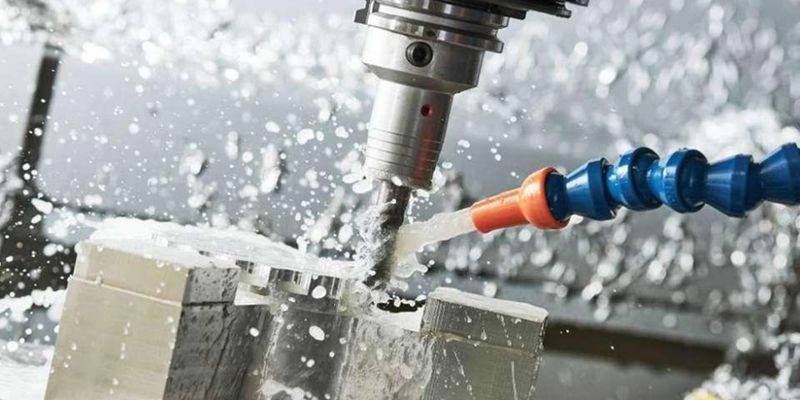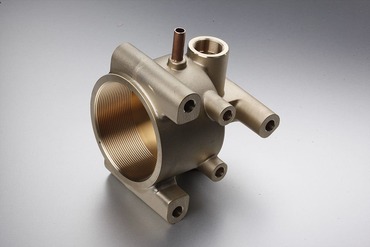Discover expert tips on machining bronze alloys with Vastpcc including CNC techniques, alloy selection, speeds, feeds, and precision component solutions.
If you’re working with machining bronze, you already know it’s a material that demands precision and the right approach. Whether you’re a machinist, engineer, or hobbyist, mastering the best techniques for CNC bronze machining can make all the difference in achieving smooth finishes, reducing tool wear, and getting parts that perform reliably. In this guide, we’re diving straight into everything you need to know—from choosing the right bronze alloys like bearing bronze C932 or aluminum bronze, to optimizing cutting speeds, feeds, and tooling. Ready to take your bronze machining skills to the next level? Let’s get started.
Introduction to Bronze Machining
Bronze, a copper-tin alloy with roots tracing back thousands of years, remains a vital material for modern precision parts. Its unique combination of metals makes it highly durable and versatile, offering excellent performance in various industrial applications.
Choosing bronze for machining means tapping into its key properties: high machinability, which allows efficient shaping with minimal tool wear; low friction, making it ideal for moving parts like bearings and bushings; corrosion resistance, essential for marine and outdoor use; and strength to withstand demanding environments.
At Vastpcc, we specialize in CNC bronze machining, delivering custom components that meet exact specifications. Our expertise ensures tight tolerances, quality finishes, and optimized processes for all types of bronze alloys, supporting everything from prototypes to full production runs.
Types of Bronze Alloys for Machining
When it comes to machining bronze, choosing the right alloy is key. The most common alloys include:
- C932 Bearing Bronze: Known for its easy machinability and excellent wear resistance. This makes it a favorite for bearings and bushings where smooth, low-friction performance is needed.
- C954 Aluminum Bronze: Stronger and tougher, this alloy works well for marine parts and heavy-duty applications due to its high strength and corrosion resistance.
- Phosphor Bronze: Often used in electrical components because of its good conductivity, combined with decent strength and corrosion resistance.
Each alloy offers different machinability ratings, which help guide what’s best for your project. For example, if you need ductility and easier cutting, C932 is a top pick. For parts requiring hardness and strength, aluminum bronze fits better.
Also, consider leaded versus lead-free options. Leaded bronzes machine more easily but face regulatory restrictions in some industries. Lead-free alloys comply better with environmental rules but are generally tougher to machine.
In short, selecting your bronze alloy depends on balancing machinability, strength, corrosion resistance, and compliance for your specific needs.
Essential Techniques and Processes
When it comes to machining bronze, mastering the right techniques is key to getting clean, precise parts. The core methods include CNC turning for round and cylindrical components, milling for more complex shapes, plus drilling and reaming. For drilling, using reamers with flattened lips helps prevent the tool from grabbing or sticking, which can ruin the finish.
Tooling choice matters a lot. Carbide-tipped or high-speed steel (HSS) tools with zero rake angles work best. These tools provide a smooth finish and help avoid work hardening, which is common with tougher bronze alloys.
Recommended cutting speeds usually range between 70 to 200 surface feet per minute (SFM) depending on the type of bronze alloy. Proper feed rates and speed adjustments are critical to reduce burrs and control heat build-up during machining. Balancing these parameters keeps tools sharp longer and improves surface quality in your CNC bronze machining projects.
Best Practices and Common Challenges

When machining bronze, using the right coolant and lubrication is key. Soluble oils work best to keep tools sharp longer and help control stringy chips that can gum up the process. For sintered bronze, re-impregnation with lubricants can prevent issues with porosity and extend the life of your parts.
Some alloys like aluminum bronze can be tough on tools due to abrasion. To avoid built-up edges and premature tool wear, it’s important to keep tools razor-sharp and replace them as needed. This also helps maintain the integrity of the part’s surface and avoids damaging porosity.
For finishing, polishing and heat treatment play a big role. Using Coordinate Measuring Machines (CMMs) ensures parts stay within tight tolerances. When working in environments where sparks could be a hazard, it’s crucial to use finishing methods that avoid any risk of ignition while still achieving smooth, high-quality surfaces.
Applications and Industry Uses
Bronze machining plays a vital role across many industries here in the U.S. Key sectors include manufacturing bearings and bushings for automotive parts, gears, and valves where durability and precision are crucial. In aerospace, bronze components are valued for their reliability under stress, while marine applications benefit from bronze’s natural corrosion resistance in harsh saltwater environments.
Compared to steel, bronze offers lower friction and self-lubricating properties. This means parts last longer and operate smoother, especially in low-stress, high-wear uses like bushings and bearings. Bronze also withstands corrosion better, reducing maintenance needs and downtime.
At Vastpcc, we specialize in precision CNC bronze machining, delivering custom bronze components tailored to local manufacturing demands. Our experience ensures consistent quality and fast turnaround, supporting U.S. businesses that rely on tough, reliable bronze parts to keep their operations running smoothly.
Partnering with Vastpcc for Bronze Machining Services
When it comes to machining bronze, Vastpcc stands out with advanced CNC capabilities tailored for precision and consistency. We handle a wide range of bronze alloys, including custom blends, to meet your specific project needs. Plus, our rapid prototyping services let you test and refine parts quickly—perfect for businesses across the U.S. looking for reliable local support.
We focus on cost optimization by applying smart design-for-manufacturability principles. This helps reduce material waste and minimizes tool wear, keeping your production efficient and budget-friendly.
Ready to get started? Contact Vastpcc today for quotes on CNC bronze machining. We’re proud to offer quick local turnaround times while delivering top-quality bronze components to keep your projects moving smoothly.

